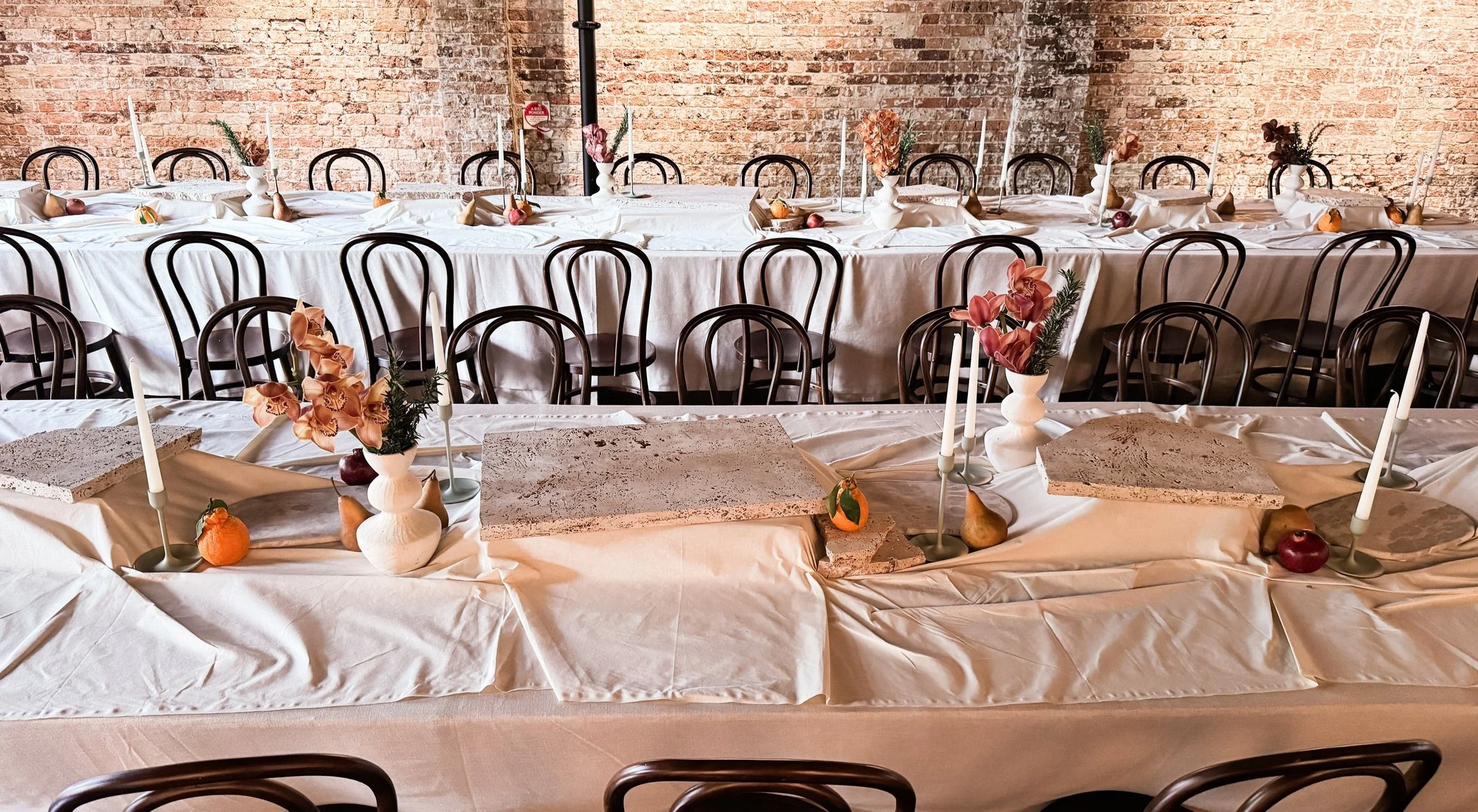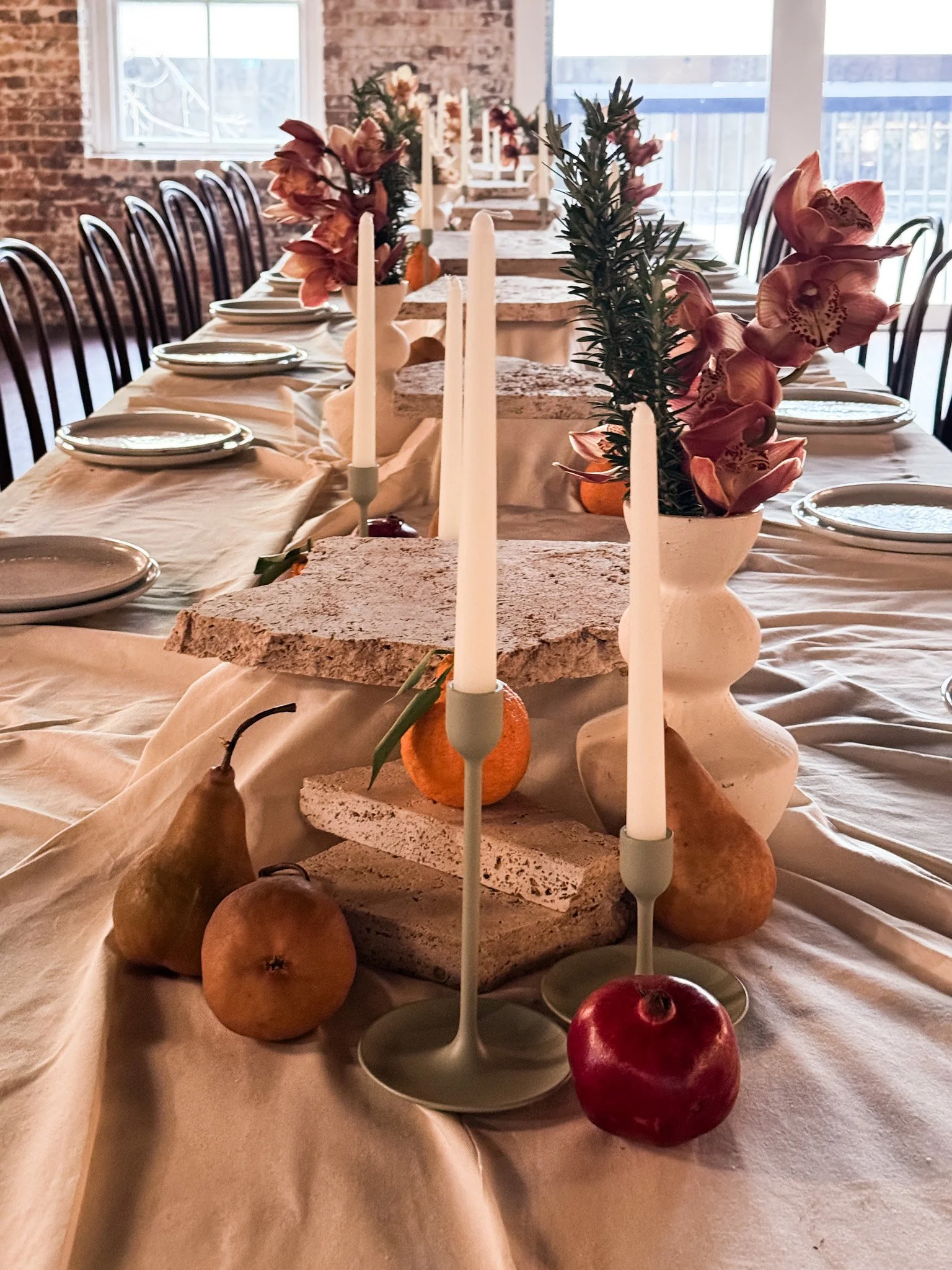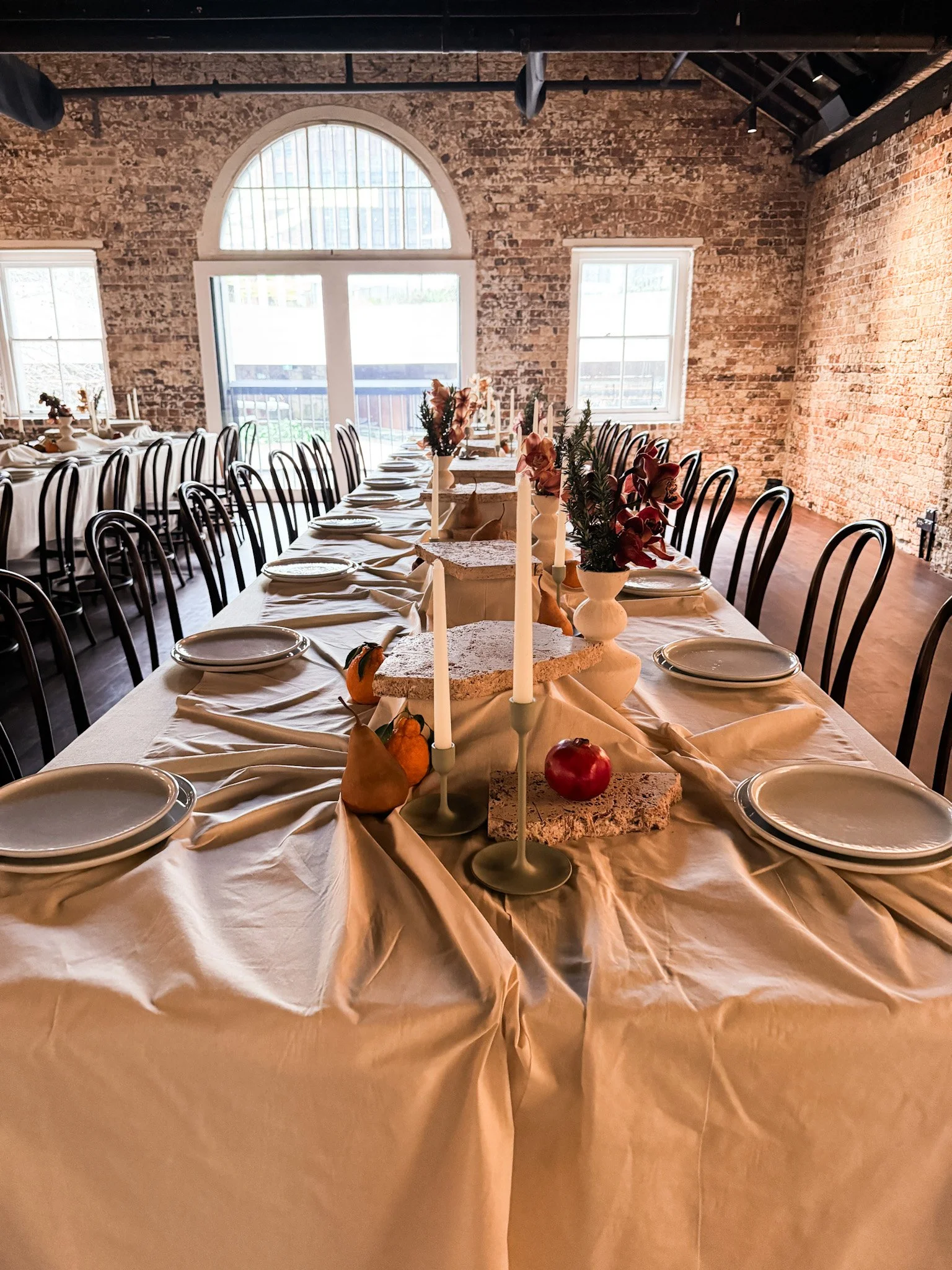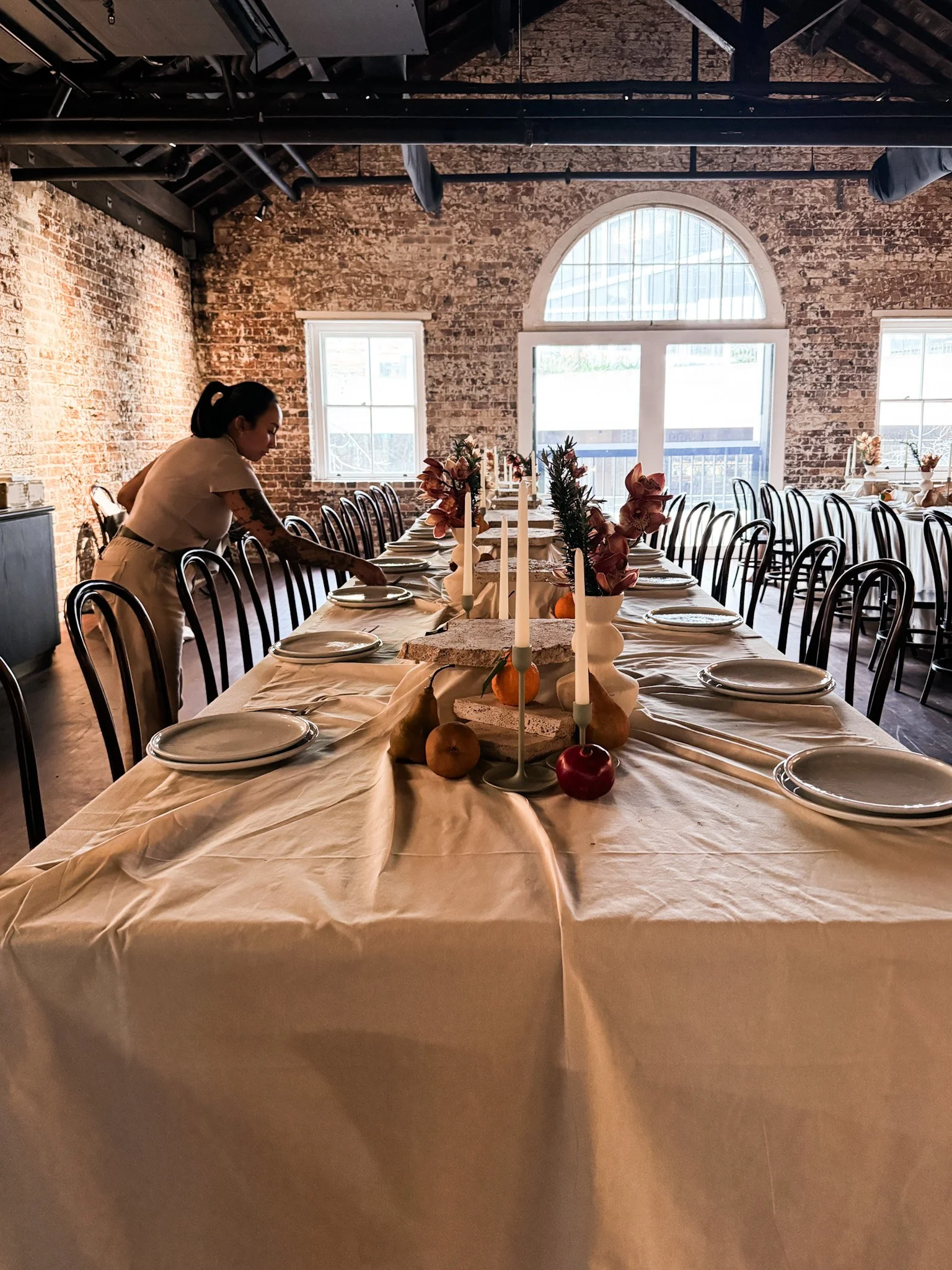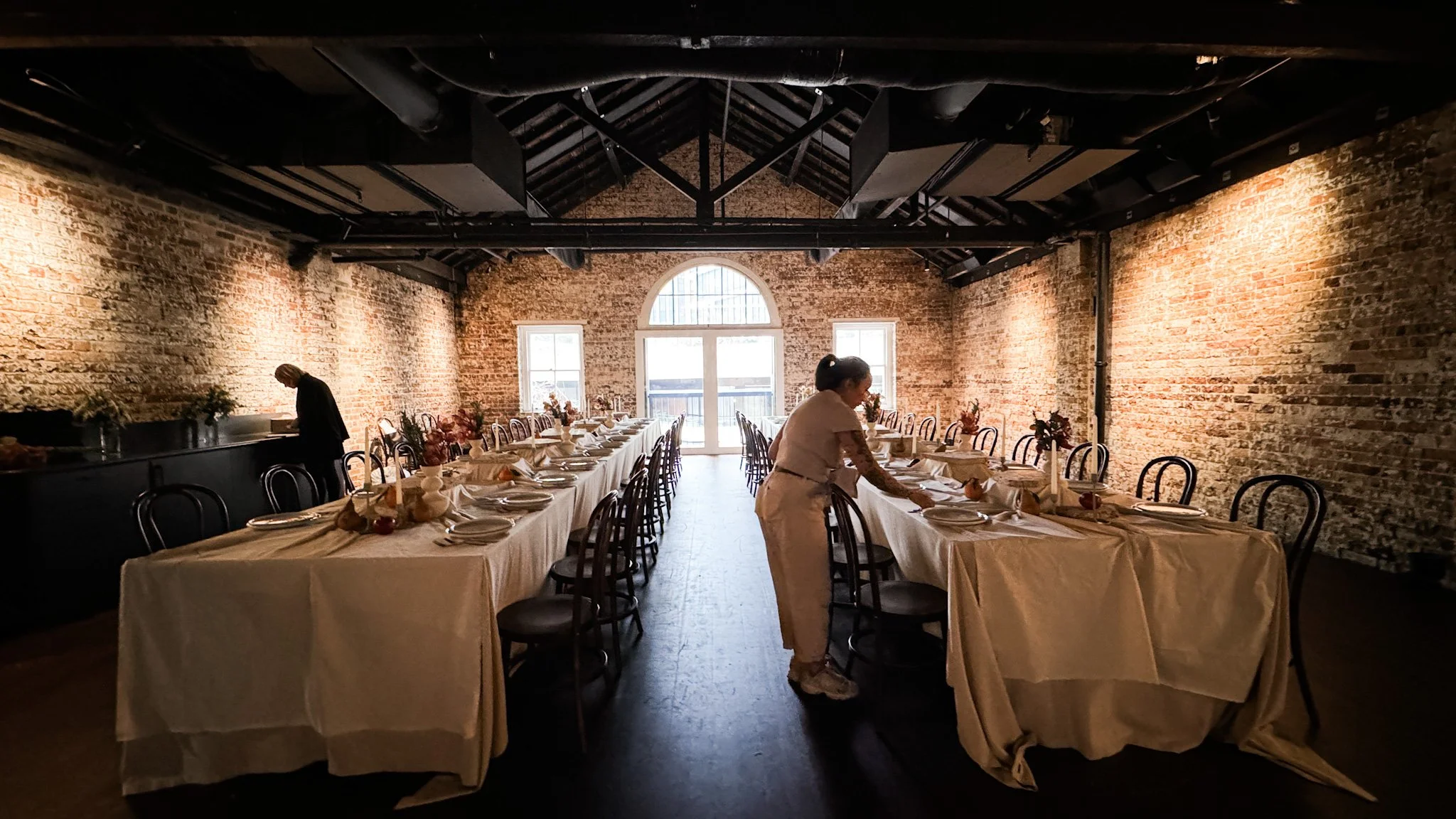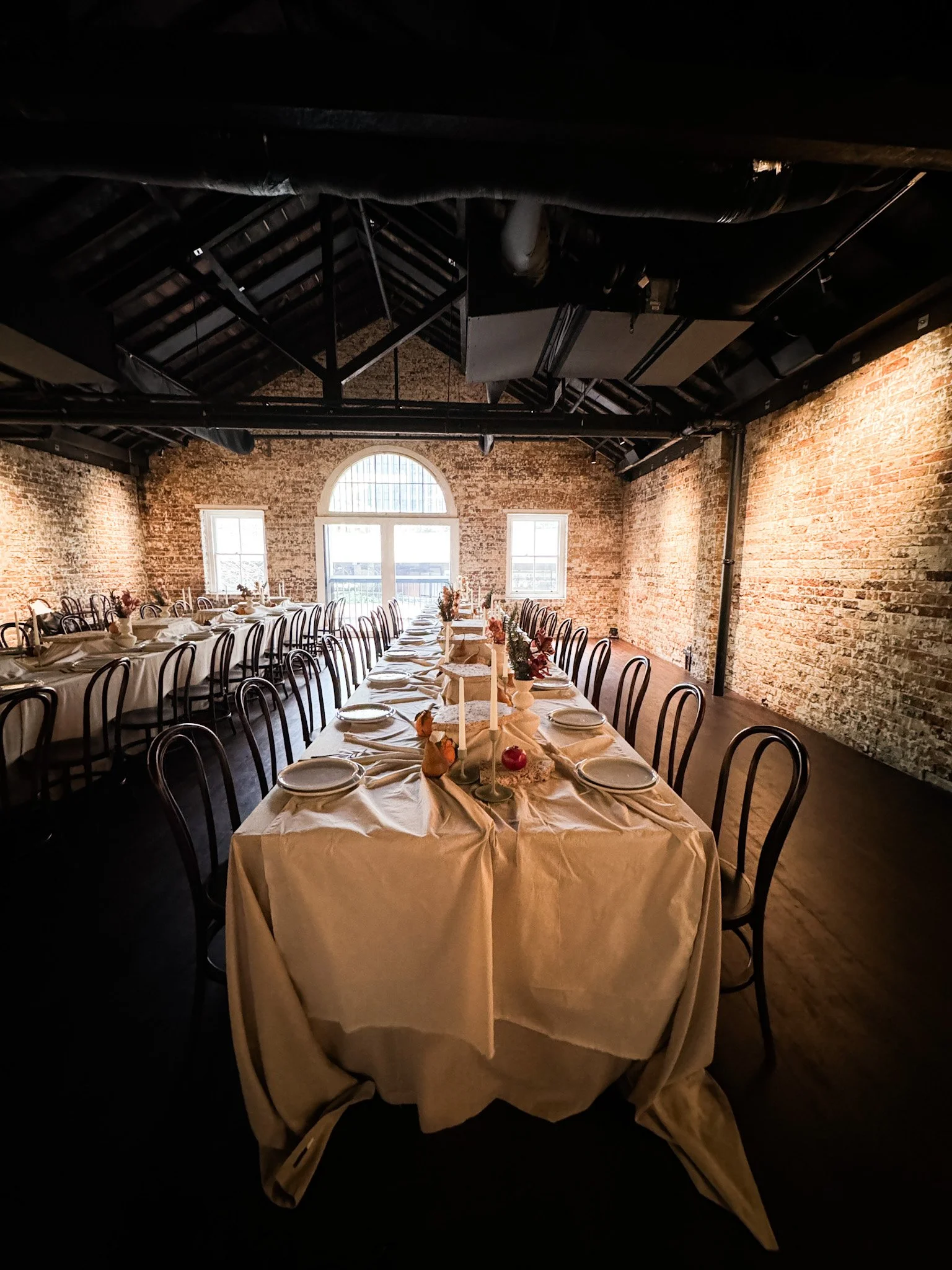Is that a podium or…?
Last month, I had the pleasure of working with one of my favourite clients, Rogue & Refined. They are an event management agency focusing on immersive in-region experiences in the Australian wine and beverage landscape.
We were briefed to create a tablescape that harmonised with the interior of the divinely decorated Hinchcliffe House—lots of wonderful muted tones, wheat-inspired flora, and historical raw brick.
We also had to accommodate a flight of wines to be served, as well as food to be presented as shared platters.
So, rustic, tonal, and textural play was at hand.
Over the linen-draped tablecloths, we staggered some slimline boxes, then blanketed these with a drape of raw calico. Already, there was a carved marble sculpture feeling to the surface created by the folds of the fabric.
We then cracked some large travertine pavers by laying them over a metal rod and hammering in the same spot with a mallet—enjoying the spontaneous and irregular rough edges created. The larger piece was placed atop the upside-down fruit boxes covered in fabric, with the smaller pieces stacked around to create plinths for candlesticks or pieces of fruit that related back to the wine tasting notes.
Of course, this is a really formal environment and rather themed; however, it met the requests of my client, who needed to create a welcoming and accessible tablescape that could serve as both decorative, interesting, and purposeful.
The venue used the raised stone areas and some non-raised areas as markers for where to place platters, ensuring that removing any of the flora to make space was avoided.
So, keep in mind anything that could serve as a riser—cherry boxes, bricks, egg cartons—consider a covering for them. Is it fabric, or could it be paper? Then, pop a podium on top to sturdy the structure and give the area a stadium feel. Perfect for glassware or wine buckets at the back of a bar, or of course, backup crackers on a grazing station.
A little elevation does exactly that—elevates the area you are working with and makes use of dead areas in the landscape.

